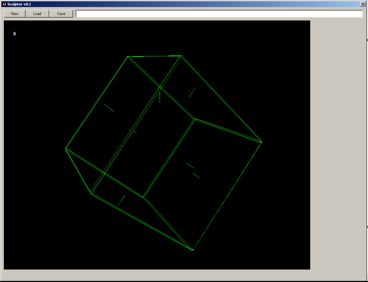main menu
browse the gallery of student projects (select TAG or YEAR) or the archive of animations
browse the gallery of student projects (select TAG or YEAR) or the archive of animations

Over the past three years I have been very interested in the process of transferring a drawn or imagined idea into a full 3D geometric model. There are many techniques that exist to achieve this goal, most notable are polygonal and NURBS creation methods, though it is useful to note that once a polygonal mesh is created, it can be refined and smoothed to create a more pleasing shape.
Looking at work by famous sculptors, such as Henry Moore and even Michelangelo, I noticed how very difficult it would be to produce authentic-looking objects in these styles, such as Moore’s reclining figure, a bronze sculpture depicting a rather abstract figure lying gracefully on a bronze plinth.
The organic shapes in this piece would be extremely difficult to reproduce capturing the same lazy sweep as the artists here has done ??” in fact the computer modeler would have to actually work to produce them, whereas it came naturally to the sculptor. Even with more complicated and realistic sculptures such as Michelangelo’s Statue of Giuliano de’ Medici, again it would be very difficult to produce these results in a standard computer environment, and may be more intuitive to a sculptor, even when using advanced tools such as Non-Uniform Rational B-Splines (NURBS) to create the curves. Working with NURBS modeling techniques can be a very time-consuming and un-creative experience, and geometry created with said methods can sometimes result in an overly complicated and even unusable end-products if due care is not taken throughout the process.
Polygons, therefore, can be taken as one of the easiest and most intuitive modeling techniques, and most importantly, the easiest to correct and refine later. The unfortunate downside is that the user must exhibit a large knowledge of the underlying geometric techniques – e.g. vertices, edges and faces/polygons, and the structure in which they fit together – in order to work with a polygonal model. Polygonal surfaces also have no integral refinement techniques – unlike parametric surfaces such as NURBS – and the user must take this into account when creating realistic looking geometry is required, as the resulting model may look “blocky” and unrealistic. It is down to the user, therefore, to build refinement into their own model, which again requires knowledge of how flat planes combine to create the illusion of curvature. Taking this into account, I have decided to attempt to create a modelling process based on polygonal geometric techniques, though one which will hopefully eradicate much of the knowledge needed of geometry in order to create workable meshes. Just as a sculptor does not necessarily need to understand the physical components of the material he/she is working with, a computer sculptor should not need to either.
files
files
The NCCA is delighted to announce the launch of a brand new course for the 2018/19 academic year. ...
Posted By: Chris Williams Date: 17/08/17 Read More...
The annual Tech Nation survey quantifies the value and growth of the UK digital economy, in particular identifying sectors...
Posted By: Richard Southern Date: 22/03/17 Read More...
Hot on the heels of their win at AniFest 2016, Naughty Princess has won the best student animation award...
Posted By: Richard Southern Date: 06/03/17 Read More...